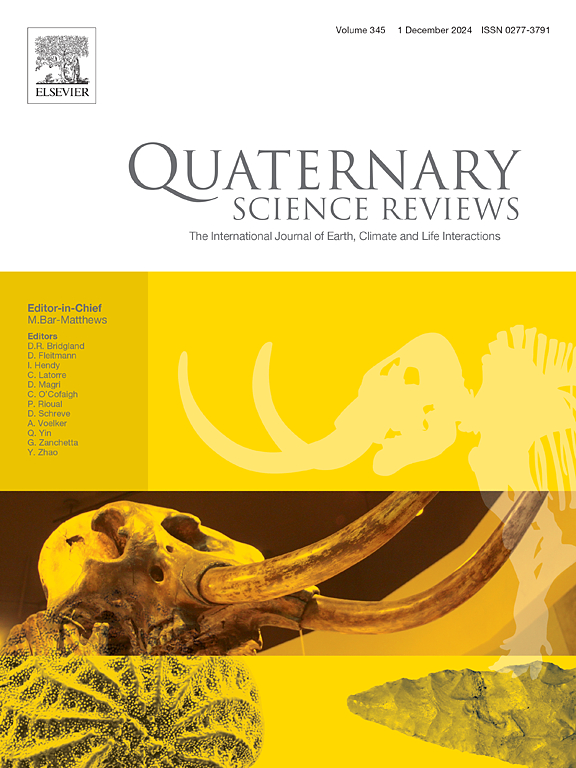Unveiling the hidden source of major historical earthquakes: A multi-scale, trans-disciplinary approach to the 1456 and 1688 Sannio earthquakes (Mw 7.0, southern Italian Apennines)
IF 3.2
1区 地球科学
Q1 GEOGRAPHY, PHYSICAL
引用次数: 0
Abstract
The southern Apennine chain ranks among Europe's regions with the highest historical seismicity, yet its seismogenic structures remain poorly defined or completely unknown, including those of highly destructive Mw ∼7.0, 1456 and 1688 Sannio earthquakes, which are examined in this study. Using a multi-scale, interdisciplinary approach - combining detailed field investigations (stratigraphic, geomorphological, structural, and paleoseismological analyses), tephrochronological and OSL dating, and reassessment of macroseismic intensity distribution from archival sources - this study identifies a possible source for these earthquakes. It corresponds to a ∼45 km normal fault system composed by two main branches (Eastern Calore Fault and Western Calore Fault) with primary segments trending E-W to ESE-WNW and dipping N- to NNE. Segments extend along the southern border of both eastern and western Calore River sub-basins and are partially connected by NNW-SSE to N-S trending, east-dipping, transfer zone fault splays. Although the morphostructural evidence of Quaternary tectonic activity is unevenly expressed in both sub-basins, they share a similar Middle Pleistocene-to-Holocene morpho-sedimentary evolution, suggesting a common driving factor, ascribable to the sub-coeval activity of the fault segments delimiting both sub-basins. On a short-time scale, this study provides the first evidence of a post-14 ka occurrence of a paleoearthquake with a surface displacement ≳0.7 m, as well as of a decametric off-set affecting post-9 ka sediments. These coseismic surface ruptures have an estimated recurrence time of approximately 1400 years, with the two more recent events likely corresponding to the Mw ∼7.0, 1456 and 1688 Sannio earthquakes. Further detailed paleoseismological investigations are recommended to uncover direct evidence of co-seismic displacement linked to the 1456, 1688, and earlier earthquakes.
求助全文
约1分钟内获得全文
求助全文
来源期刊

Quaternary Science Reviews
地学-地球科学综合
CiteScore
7.50
自引率
15.00%
发文量
388
审稿时长
3 months
期刊介绍:
Quaternary Science Reviews caters for all aspects of Quaternary science, and includes, for example, geology, geomorphology, geography, archaeology, soil science, palaeobotany, palaeontology, palaeoclimatology and the full range of applicable dating methods. The dividing line between what constitutes the review paper and one which contains new original data is not easy to establish, so QSR also publishes papers with new data especially if these perform a review function. All the Quaternary sciences are changing rapidly and subject to re-evaluation as the pace of discovery quickens; thus the diverse but comprehensive role of Quaternary Science Reviews keeps readers abreast of the wider issues relating to new developments in the field.
 求助内容:
求助内容: 应助结果提醒方式:
应助结果提醒方式:


